FW Awards: Meet the 2025 Beef Farmer of the Year finalists
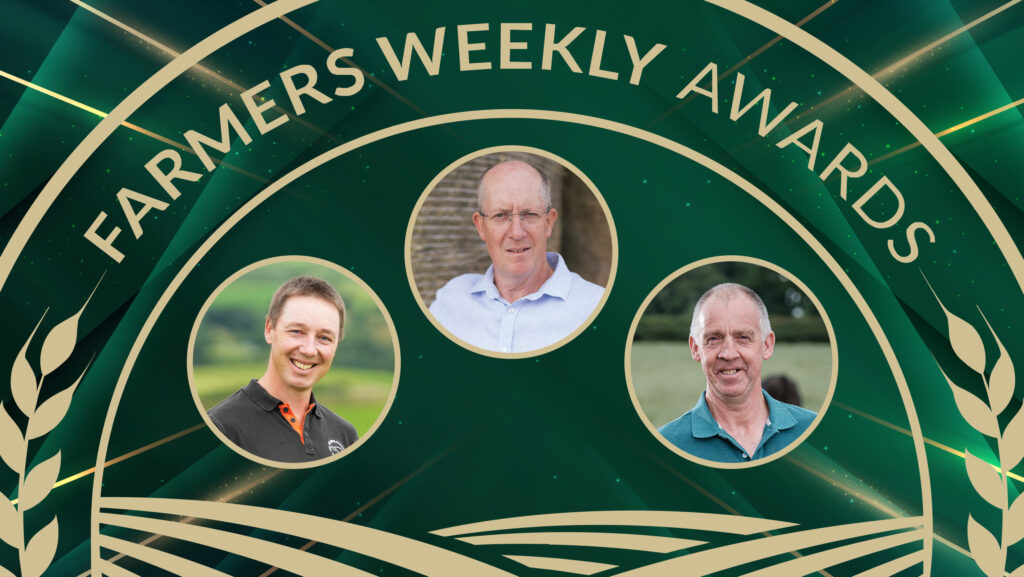 Left to right: Jonathan Chapman, Huw Jones and Mike Powley © John Wellings/Emily Fleur/Jim Varney
Left to right: Jonathan Chapman, Huw Jones and Mike Powley © John Wellings/Emily Fleur/Jim Varney All three finalists are breeding productive, fertile cows that excel on grass and forage, positioning themselves to benefit from future environmental schemes.
Finalists
- Jonathan Chapman, Atlantic Angus, Cornwall
- Huw Jones, Bryn Farm, Cardigan
- Mike Powley, Oak House Farm, Yorkshire
The judges
- James Hadwin – James runs an independent beef and sheep consultancy business, JH Agri Consultancy, and has a tenanted farm in Cumbria.
- Dylan Jones – Last year’s winner Dylan farms on Anglesey where he finishes 1,600 dairy-beef cattle annually on home-grown barley, red clover and grass.
- Rhian Price – Rhian is a freelance journalist based in South Wales, where she is also a partner in her family’s farm.
Jonathan Chapman, Atlantic Angus, Cornwall
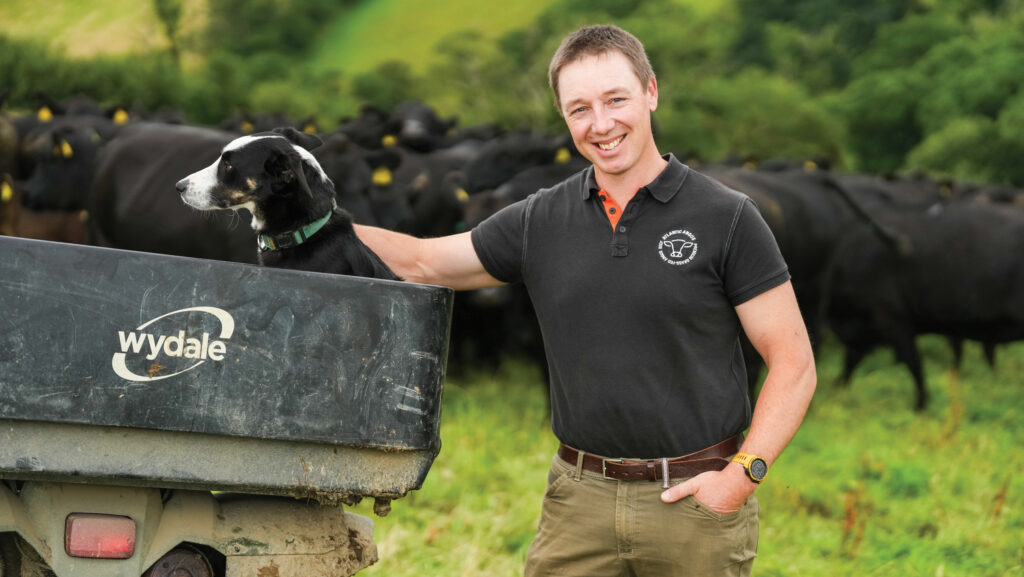
Jonathan Chapman © Emily Fleur
Cornish beef breeder Jonathan Chapman is proof that sustainability and profitability go hand-in-hand.
Jonathan worked as a farm vet for 15 years before returning full time to the farm. In that time, he has grown cattle numbers from 60 to 210-head of pedigree Aberdeen Angus plus followers.
Together with his wife, Judith, he sells pedigree bulls and finishes steers and heifers.
They have recently acquired 121ha of free-draining, coastal land on a five-year farm business tenancy.
This has allowed them to extend the grazing season and outwinter some cows and in-calf heifers to reduce housing costs. It has also enabled them to increase their holding numbers to three in case of a TB breakdown.
“TB is a big risk to my business. I have a separate isolation unit to put cattle in to get them clear, if needed,” says Jonathan.
Breeding
Having a breeding strategy that prioritises fertility, health and efficient production is paying dividends – cows calve in a tight seven-week block and heifers in five weeks.
This year, less than 4% required assistance, which is partly a result of selecting short-gestation sires and following a zero-tolerance policy.
“If I have to help at calving, look at its feet, or a cow looks at me wrong at calving, it goes,” he explains.
Cows calve indoors from the middle of March. More than 75% of animals calve within the first three weeks of the calving period.
The best cows are served to artificial insemination; first-calved heifers and a B-mob (generally later calvers) run with multiple stock bulls. Calves are then DNA-tested for parentage.
Feeding
Cows are turned out to graze shortly after calving and remain outside until October or November.
The entire farm is within Sustainable Farming Incentive agreements, with vast areas of herbal leys and red clover being established.
“We used to buy five artic loads of fertiliser. Now we buy one,” says Jonathan, adding that strategic application of 40-50kg nitrogen/ha in the spring plays a vital role in kickstarting growth.
He uses the Ruumi app to track grass growth. This uses satellites to estimate growth rates and covers. Combined with data on group demand and weight, it calculates how many days’ feed are available.
Animals are rotated on one- to three-day moves, with youngstock grazing ahead of cows to achieve good utilisation.
Calves are weaned at 200 days at housing with weaning percentages averaging 45% of mature cow weight (600kg). The best cows wean 60% of their bodyweight.
Only pedigree bulls born in the first three weeks of calving are kept entire. These are sold at 14 months, mainly to dairy farmers.
The remaining steers and heifers are sold to Tesco/Kepak at 20 months off forage.
Finished animals receive a small amount of barley, with 85% finished at 330kg deadweight at R4L/R3L.
Future
Jonathan has been measuring carbon through local and national projects (Farm Net Zero, Cornwall) and is a Monitor Farm for AHDB’s Environment Baselining pilot.
Preliminary data from the past two years show he is sequestering 22t carbon/ha a year. He plans to use these data to explore carbon credit opportunities.
He also wants to expand cow numbers and has recently purchased 10 pedigree Herefords.
These have been inseminated over three weeks and mopped up with an Angus bull to meet demand for Black Baldies for commercial suckler enterprises.
The numbers
- 100 Calving percentage for 2025
- < 4 Assisted calving percentage for 2025
- 45 Weaning percentage at 200 days
- 7 Bulling period in weeks
Farm facts
- Farming 350ha – 240ha owned and 110ha rented
- Running 210 Aberdeen Angus pedigree cows plus 450 followers
- Forage-based, commercial system
- Selling the best females and bulls for breeding
- Meat sold direct and supplied to Kepak/Tesco
- One full-time employee and one student part-time
The judges liked
- Data-driven approach to find the best genetics that thrive under commercial conditions
- Breeding to improve the herd, not breed “individual stars”
- Future-ready business that is rooted in resilience
- Tight calving pattern and high-health herd
What the judges say
Meticulous record-keeping is helping Jonathan breed pedigree animals that thrive off forage under commercial conditions. He is well placed to meet future demands head-on.
Huw Jones, Bryn Farm, Cardigan
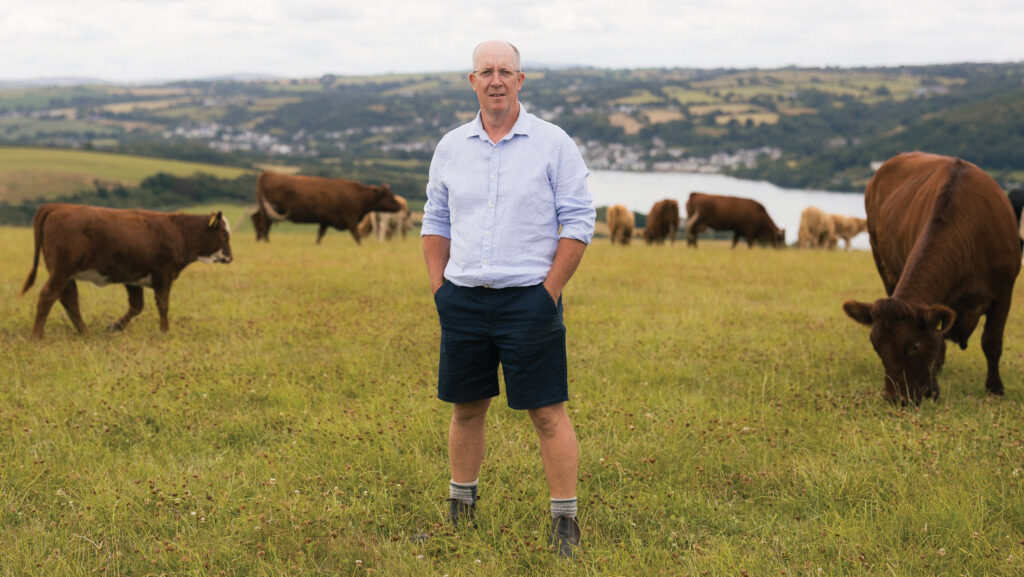
Huw Jones © John Wellings
Increasing stocking rates and focusing on producing beef from forage and home-grown cereals is helping Cardigan beef farmer Huw Jones realise enviable gross margins of £814 a cow.
Knowing his cost of production inside out means Huw has been able to identify ways to streamline his 105-cow herd of Salers cross Herefords.
He is playing to the strengths of his coastal farm, but is constantly evolving to meet challenges.
Moving to outwintering has saved almost £7,000 annually in straw and labour alone – helped by a transition from using Charolais to Stabiliser bulls.
This has allowed him to start calving outdoors, which has freed up shed space for youngstock and enabled him to lift numbers.
“Bryn means hill. There is not an easy place to build sheds.
“This season, we calved Charolais and heifers indoors, but calved Stabilisers outside on deferred grass and bales,” explains Huw.
Breeding
The bulling period has been reduced to seven weeks, with 90% of cows calving in the first six weeks.
Investment has been made in equipment to make jobs easy for one person. For example, a calf catcher attached to the buggy has improved safety at calving allowing birth information to be recorded in the field.
Last year, they weaned 95% of calves at 220 days with weaning weights averaging 270kg – 42% of cow weight.
Feeding
Huw undertook a grass masterclass through Farming Connect, which he credits with transforming his grassland management.
Challenges with dry weather have since seen him move from rotational grazing to an adaptive multi-paddock system with cattle moved on two-day shifts.
He also practises direct drilling to keep his “blow-away” light sandy soils intact.
Arable acreage has been reduced from 40ha to 10ha with five to seven-year herbal leys grown instead.
Artificial fertiliser is no longer spread on the grazing platform, with just 12t of nitrogen purchased for the farm last year. This has saved £13,000 annually.
One-third of the farm is soil sampled each year, and nutrients are only applied as and when needed. A dedicated 10ha of grass are grown to produce silage and hay.
The best heifers are kept for breeding, with the herd running an 18% replacement rate.
The remaining heifers have been sold as yearling stores at Whitland Market, but he now plans on finishing these.
“Because we are moving away from Charolais to Stabiliser, I think they will fatten off grass,” says Huw, who adds it will act as a safety net if the herd is closed with TB.
Bulls are mostly kept entire and finished off straw and creep. The creep comprises home-grown rolled barley and oats alongside a maize-based, purchased blend.
Bulls are sold to ABP at 13 months weighing 350-370kg deadweight and hit R and U grades and fat classes two to four, on average.
Future
Alongside the farm, Huw and his wife, Meinir, have diversified into holiday lets. They take on students from the local school and have employed Harper Adams undergraduates for the past 12 years.
They have tested the whole farm to assess organic matter and hope this is something they will be rewarded for in the future. Furthermore,
Huw believes the business is in a good position to capitalise from the newly released Sustainable Farming Scheme in Wales.
However, he says the focus of the business remains unchanged: farming profitably without government subsidy.
The numbers
- 18 Herd replacement rate (%)
- 2 Age at first calving (years)
- 42 Cow weaning efficiency (%)
- 90 Cows calving in the first six weeks (%)
Farm facts
- Farming 100ha of which 93ha owned
- Average annual rainfall 1,270mm
- Growing grass alongside 10ha of oats and barley
- 105 Salers cross Hereford suckler cows, some calving outdoors
- Transitioning from Charolais to Stabliser bulls
- Selling finished bulls to ABP and store heifers at Whitland market
The judges liked
- Plays to the strengths of his coastal farm
- Has set clear goals with impressive knowledge of costs
- Built a system to lower labour requirements by focusing on fertility and forage
- Is cutting costs but still getting a good level of output
What the judges say
Huw has developed a robust, forage-based system that suits his farm and has a clear focus on reducing costs. This has seen him develop a profitable suckler enterprise to weather volatility.
Mike Powley, Oak House Farm, Yorkshire
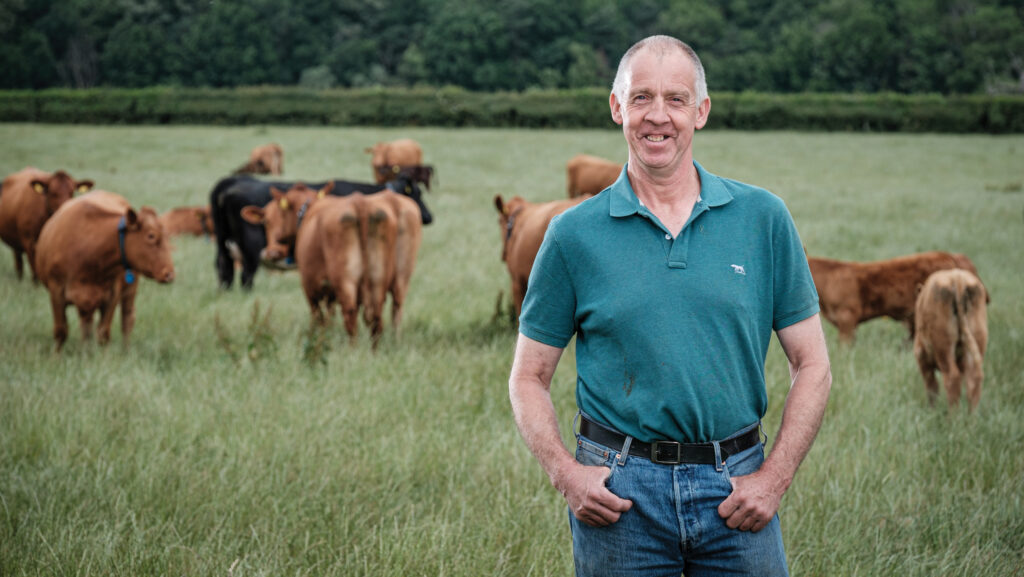
Mike Powley © Jim Varney
Control what you can within the farmgate and breed for efficiency to keep things simple.
These are the guiding principles of Mike Powley’s beef system at Oak House Farm.
This philosophy has driven continuous improvement and helped him develop an efficient suckler cow that thrives on forage.
A state-of-the-art greenfield site, completed three years ago, includes dedicated sheds for heifers, cows and bulls, as well as an indoor handling system with 14 calving pens, capable of processing 120 animals an hour.
Breeding
Breeding policy has constantly evolved in a quest for efficiency. Norwegian Red genetics have been used to improve health traits and milk.
Heat detection collars and a 100% artificial insemination strategy give Mike access to top-tier genetics.
Today, South Devon cows are crossed to sexed Aberdeen Angus semen to produce replacements.
Heifers are mated to an easy-calving Limousin and calve at two years old, while second calvers and older cows are mated to Charolais bulls with good terminal sire traits.
“The first thing I look at is calving ease,” says Mike. “If I can’t calve it, I don’t want it. You can’t sell a dead calf.”
He also pelvic scores heifers and aims for a body condition score of 2.5 at calving.
His goal is simple: low-maintenance “ghost cows” that are only seen at calving and service.
Feeding
Cows calve indoors from late March before moving onto a rotational grazing system across 17 paddocks of grass and clover swards, each 2ha.
The grazing land is heavy clay soil and has remained in permanent pasture for 20 years, receiving no artificial fertiliser. Calves are fed grass only and weaned in October/November.
Last year, cows weaned 48% of their bodyweight – a testament to maternal efficiency.
Mike is focused on making high-quality, home-grown feed to keep a lid on purchased feed costs.
Ryegrass and clover swards are harvested on a multicut regime, then baled and stacked according to quality. The best bales are fed to youngstock.
The arable and beef enterprises work in synergy. The cereal and protein needs of finished bulls and heifers are met using home-grown barley and beans, milled on farm.
“I can’t improve the soil without the cows, but the arable enterprise grows feed for them,” says Mike, who is close to 90% self-sufficient in feed, buying only straw, minerals and molasses.
Bulls are finished aged 12-14 months, targeting a 400kg carcass, while heifers finish at 360kg deadweight at 19-22 months.
A visit to US regenerative agriculture pioneer Gabe Brown in 2015 convinced Mike to abandon the plough on the lighter, sandy arable ground in favour of direct drilling.
He says they have been rewarded with healthier soils and fewer chemical inputs.
An eight-year rotation now includes three-year red clover and ryegrass leys, followed by winter wheat and barley.
Cover crops such as mustard or radish build soil health before spring beans, after which land returns to cereals and then grass.
Future
Mike has been carrying out carbon audits through his meat buyer ABP and says it has reaffirmed his approach.
“I think in the future we will get rewarded for our carbon scores. We are already seeing a premium for regenerative wheat in the arable sector.”
With a system already built around sustainable practices, Oak House Farm looks well placed to capitalise on future demands.
The numbers
- > 60 Conception rate to first service (%)
- 9 Number of empty cows last season
- 1.6 Daily liveweight gain of bulls during housing (kg)
- 48 Weaning efficiency of cows (%)
Farm facts
- 119 spring-calving cows and heifers
- South Devon cross Aberdeen Angus cows and heifers crossed to Limousin and Charolais bulls
- Farming 146ha, of which 49ha owned
- Higher Level Stewardship and Sustainable Farming Incentive agreements
- Bulls finished aged 12-14 months and heifers 19-22 months for ABP
The judges liked
- Exceptional passion and drive for the beef industry
- Focused on the right goals to meet future demands and adapting to meet challenges
- Synergy between arable and beef enterprises to reduce costs
- Using artificial insemination to fast-track genetic gain
What the judges say
Mike has a clear focus on reducing costs in his grassland-based system and is breeding an easy-care cow to suit his farm and reduce labour requirements.
A word from our sponsor
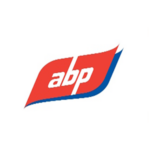
It’s once again our pleasure to be sponsoring the Farmers Weekly Awards, which showcase some of the best talent and dedication to excellence our industry has to offer. Best of luck to all the finalists.
Phil Hambling, director of agriculture and sustainable sourcing, ABP
